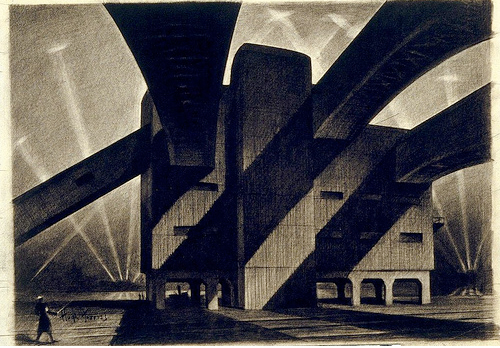I first ran across this idea in the brilliant book The Quantum Thief by Hannu Rajaniemi, which along with The Fractal Prince are some of the best sci fi books i’ve ever read, so you should totally go check them out.
We are not here today however to discuss alternative realities, we are here to discuss actual potentials for this reality. The significant potential in this case being a city that actually walks.
British architect Ron Herron in 1964 first seriously proposed the moving city concept. In an article in avant-garde architecture journal Archigram, Ron Herron proposed building massive mobilerobotic structures, with their own intelligence, that could freely roam the world, moving to wherever their resources or manufacturing abilities were needed. Various walking cities could interconnect with each other to form larger ‘walking metropolises’ when needed, and then disperse when their concentrated power was no longer necessary. Individual buildings or structures could also be mobile, moving wherever their owner wanted or needs dictated. Early precursors to this include Hell On Wheels the mobile town of support personnel, restaurants, saloons, and various recreation facilities (laundry, gambling, dance halls, etc.) followed the railroad during the building of the U.S. transcontinental railroad. More modern examples include cruise ships.
However, Manuel Dominguez, Spanish architect, proposes an actual walking city.
Manuel Dominguez’s “Very Large Structure,” is the result of his thesis project at ETSA Madrid, and proposes a nomadic city that can move on caterpillar tracks to locations where work and resources are abundant.
Dominguez looked to the world of heavy engineering to inspire the structure’s colossal steel frame and caterpillar tracks.Very Large Structure, despite its enormous size, has much less of an impact on its surrounding ecosystem. Its mobility is proposed as a way to encourage reforestation of the static cities which it replaces, and part of its day-to-day function is the management of this environment. The specific social conditions of the Spanish territory it is designed for also add to its relevance: it provides work for the high number of unemployed citizens in Spain. Dominguez even incorporates on-board energy generation.
With a length of 560 metres, the city would be made up of three levels. Three levels would house an array of functions necessary for the city to function and accommodate a large nomadic population. The lowest would function as a warehouse and construction area, while the middle would accommodate mechanical functions such as waste disposal and air conditioning, and the top story would be used as a living deck where new architectural structures can be tested.
The structure is based on a giant gantry crane. A total of 36 oversized crawlers would allow it to move, propelled by the kinds of electric engines used in large sea vessels. Despite its size, the city would strive to reduce its impact on its surroundings – the area left behind by the city would be reforested.


















































